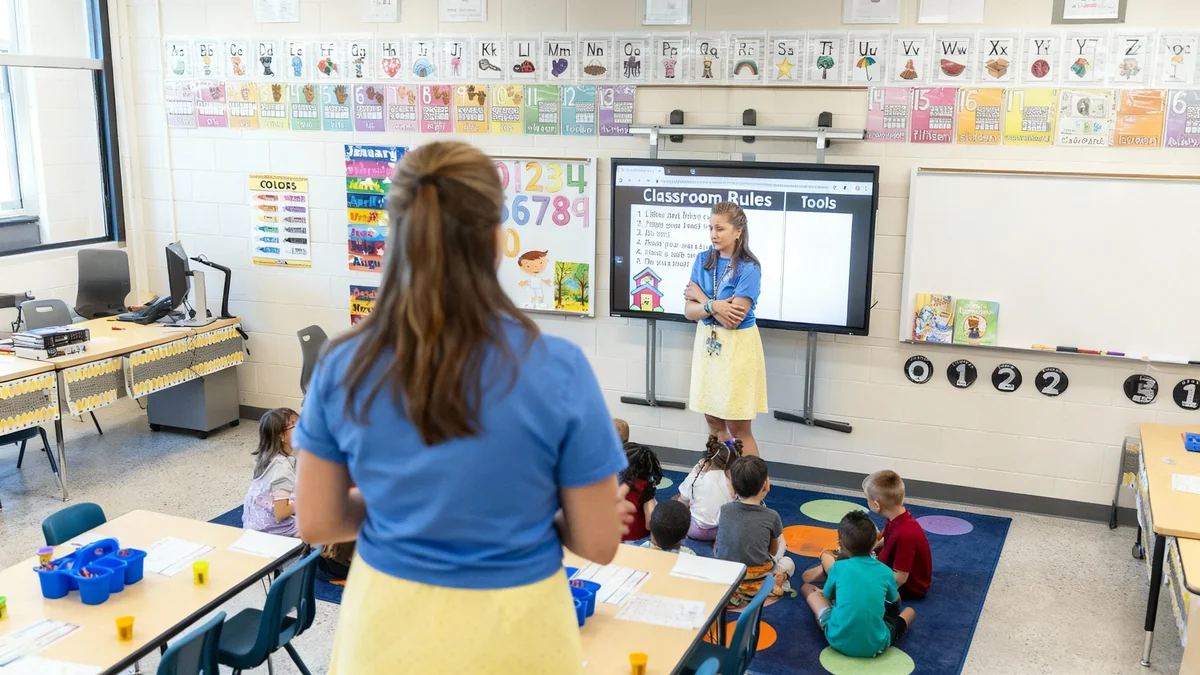The Minneapolis Federation of Educators (MFE) has formally filed its intent to strike with Minneapolis Public Schools (MPS). This action signals a critical phase in ongoing contract negotiations between the union and the district. The filing involves three separate contracts covering teachers, educational support professionals, and adult educators.
State law requires a minimum of 10 days' notice before any strike can begin. This means the earliest a strike could potentially happen is November 11. Discussions between MFE and MPS are continuing, with both sides expressing a desire to reach an agreement and avoid a work stoppage.
Key Takeaways
- MFE filed intent to strike against Minneapolis Public Schools.
- The earliest a strike could occur is November 11.
- Negotiations involve contracts for teachers, support staff, and adult educators.
- MFE seeks smaller class sizes and higher wages.
- MPS cites budget constraints in current negotiations.
Negotiations Underway Since Spring
Contract negotiations between MFE and MPS began in April. Over several months, the union presented 35 proposals across nine public sessions. Despite these efforts, an agreement was not reached, leading MFE to file for mediation in August. The current intent to strike filing marks a significant escalation in the negotiation process.
Fact Check
- Negotiations started in April.
- MFE submitted 35 proposals.
- Mediation began in August.
- 10 days' notice is legally required before a strike.
Marcia Howard, president of MFE's teacher chapter, emphasized the union's commitment to reaching a fair resolution. She stated, "We know there is still plenty of time to negotiate a strong contract that recognizes the district’s financial situation while making investments that will give students the schools they need to thrive and bring families back to MPS." This highlights the dual challenge of addressing both the district's financial realities and the needs of students and staff.
Union Demands Focus on Class Size and Wages
MFE's core demands center on two main areas: classroom sizes and compensation. The union is advocating for reductions in class sizes, specifically proposing to lower kindergarten class sizes from 22 students to a cap of 20. This measure aims to improve learning environments for young students.
Regarding wages, MFE seeks significant increases for its members. Initial proposals from the spring included a 7% pay increase for teachers in the first year, followed by a 6% increase in the second year. For education support professionals, the union proposed a 12% increase in the first year and a 10% increase in the second year. MFE also pushes for adult educators to receive pay equivalent to their teacher colleagues, addressing a perceived disparity.
"We know there is still plenty of time to negotiate a strong contract that recognizes the district’s financial situation while making investments that will give students the schools they need to thrive and bring families back to MPS." — Marcia Howard, President of MFE's Teacher Chapter
Impact on Students and Families
Smaller class sizes can lead to more individualized attention for students, which often results in improved academic outcomes. For families, the prospect of a strike creates uncertainty about school operations and childcare arrangements. The union's goal of bringing families back to MPS suggests a focus on creating an environment that attracts and retains students in the district.
District Cites Tight Budget
Minneapolis Public Schools acknowledges the ongoing negotiations and the union's demands. However, the district has communicated that its budget is currently facing significant constraints. MPS officials expressed hope for an agreement that balances fairness with student needs, while also preparing for potential state and federal funding reductions.
Budget Challenges
School districts across the country often grapple with fluctuating funding levels. State and federal budgets can impact local school resources, making long-term financial planning complex. MPS's mention of potential funding cuts highlights the economic pressures influencing its ability to meet all union demands.
The district stated its goal is to "reach an agreement that is fair, student-centered and ensures the district can thrive even if there are state and federal funding cuts." This statement underscores the delicate balance MPS must strike between its financial health and the needs of its employees and students. The negotiations are a complex process, involving not only the immediate demands but also the long-term sustainability of the school system.
Next Steps in Negotiations
With the intent to strike filed, the countdown to November 11 has begun. Both parties remain at the bargaining table, continuing discussions in an effort to avoid a strike. The coming days will be crucial for reaching a compromise that addresses the concerns of educators while also considering the financial realities of the school district.
The community will be closely watching these developments. A strike could disrupt the education of thousands of students and impact families across Minneapolis. The hope is for a resolution that supports both the dedicated educators and the students they serve.





